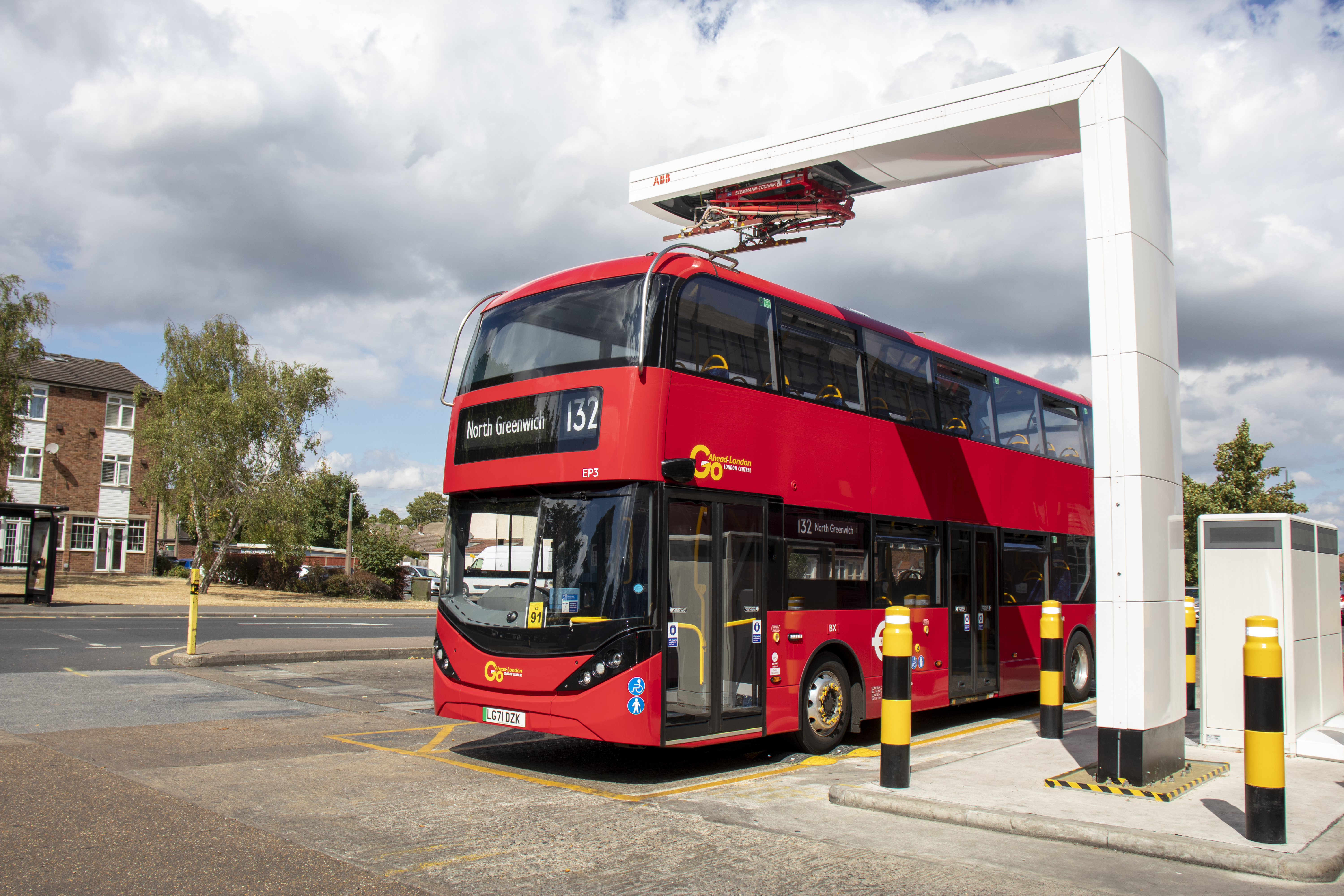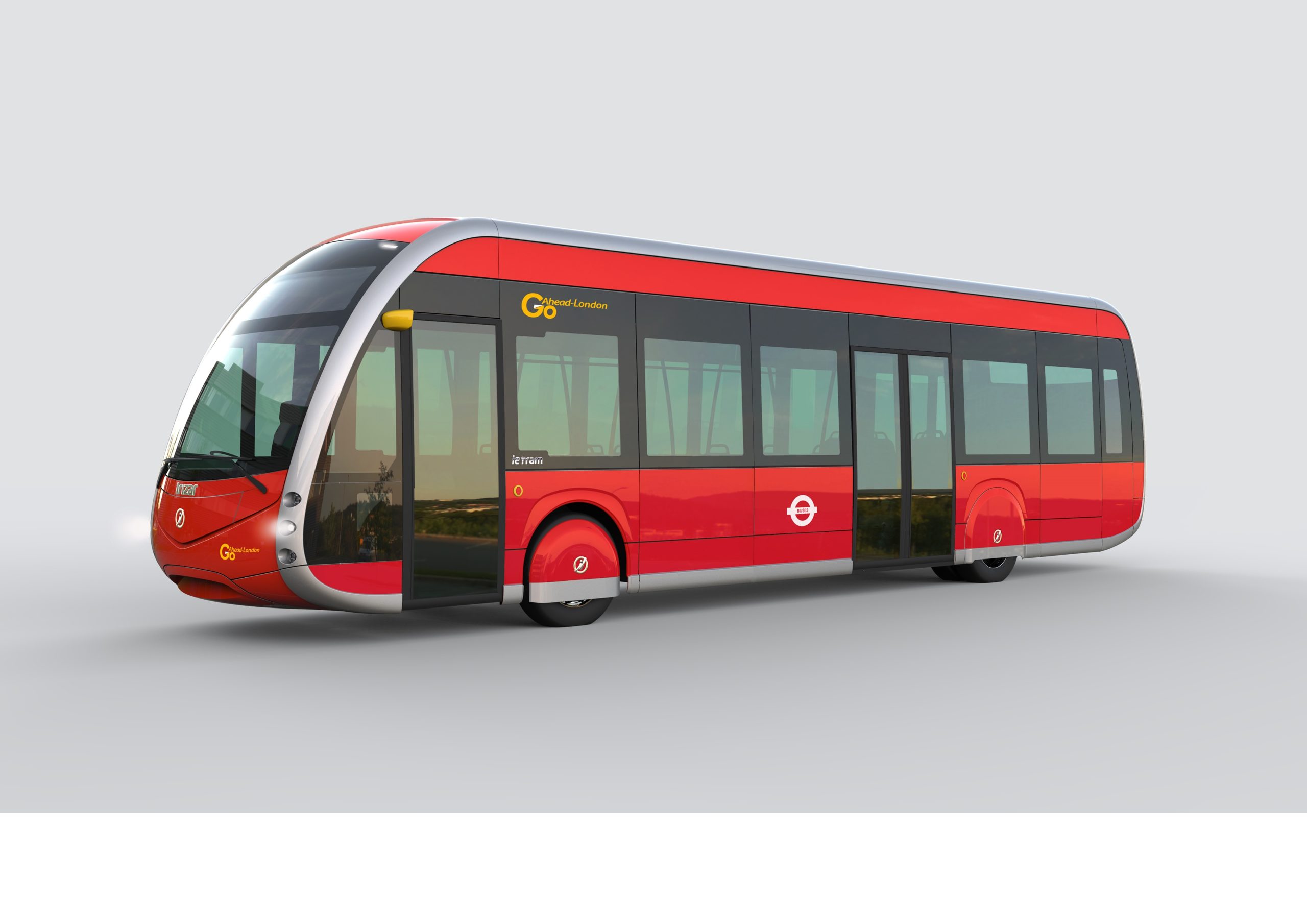
London’s new generation electric bus can be topped up in only ten minutes. This is possible due to an innovative wireless charging technology called pantograph. Read everything about it here.
Billboard
Skyscrapper
Halfpage
More than 850 zero-emission electric buses already operate in London
Transport for London (TfL), the operator of travel services across the British capital, has announced a wireless new bus charging technology. The pantograph charging technology for electric buses is now available at Bexleyheath bus garage. These chargers have an arm-like structure, which can attach to a buses’ roof. It delivers quick, high-power charging. Wireless RFID technology with smart labels helps to improve communication between the pantograph and the bus.
Conventionally, buses in London charge overnight. With the pantograph, they can now receive a high-power current during the day. The so called “opportunity charging” increases the available power. According to TfL, a top-up with the pantograph takes less than 10 minutes. With this, buses can travel further each day. In turn, this means that TfL can offer same level of service with fewer vehicles.
The new technology aligns with TfL’s plans to deliver a fully zero-emission bus fleet in London by 2034. Depending on funding availability, this date might move forward to 2030. In line with this, TfL has pledged to only bring new vehicles into service that are zero-emission. More than 850 zero-emission electric buses already operate in London. For the most part they are powered by overnight charging at bus garages.

Experimenting with electric buses
The route 132, which runs between North Greenwich and Bexleyheath, is the first fully electric bus route in London powered by the pantograph technology. Buses can charge at the Bexleyheath garage. From next year, TfL wants to extend the “opportunity charging” by deploying pantographs at either end of the bus route 358. This route runs between Orpington and Crystal Palace, covering 25 kilometres. That makes it one of London’s longest bus routes. Currently, the service cannot be supported by charging in a conventional garage. The pantograph at either end of the route will support the service during the day.
To increase the percentage of zero-emission buses, TfL said that a range of technologies is necessary to power the fleet. Together with bus manufacturers, TfL intends to build a vibrant and competitive zero-emission market. By working with stakeholders, it wants to ensure that the necessary infrastructure is available. For the pantograph technology, partners include Go Ahead London by TfL, the machine automation and digital services company ABB, and EV charging expert EO Charging.
Other than the pantograph charging, TfL is also experimenting with double decker hydrogen buses. In 2021, the company launched 20 such buses on routes 7 and 245 to test longer range technology. In addition, route 358 will benefit from new buses that resemble a tram. These buses will have enhanced customer features while still retaining the red livery.

London’s Bus Action Plan
The pantograph wireless charging for electric buses is TfL’s latest innovation to transform the bus fleet into a fully zero-emissions fleet by 2034. London’s Bus Action Plan outlines how to achieve this goal. According to TfL, if additional funding is available, the bus network could even contribute to net zero in London by 2030.
London is one of the leading cities in Europe when it comes to clean energy. The Mayor aims for 80% of all trips to be made by foot, by cycle, or by public transport in the year 2041. To improve air quality and to lower CO2 emissions, London has a Transport Strategy that will help to meet legal air quality limits as soon as possible.
Journey to zero
For the remaining vehicles, initiatives such as Healthy Streets, the congestion charge, and zero emission technologies are already underway. This will result in making sure London’s entire transport system is zero emission by 2050. Transport for London has led widespread public consultations building on the Ultra Low Emission Zone and the Toxicity Charge. Accordingly, central London and town centre will be zero emission zones by 2025. By 2040, there will be a zero emissions zone in inner London, and a London-wide zone by 2050.
All new double-deck buses in London are already hybrid, electric, or hydrogen. TfL wants to focus on only buying clean buses. During the next years, all 9,200 buses across London will be zero emission. Already, the single-deck buses of the city emit zero exhaust emissions. Related initiatives include 12 Low Emission Bus Zones, where the greenest buses are put on the most polluted roads, such as Putney High Street and Brixton Road; electric buses in central London and outside the centre; 30 per cent quieter and cleaner diesel-electric hybrid buses; as well as experiments with hydrogen-powered double deck buses.
Read more: This article about London includes more examples of how the city is becoming greener and smarter.












